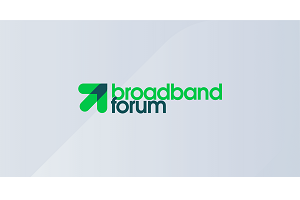Broadband Forum’s UDP speed test delivers on latency promise

Fremont, United States – Broadband operators are a step closer to being able to deliver a new standard of connectivity as Broadband Forum releases the next update of its usser datagram protocol (UDP)-based speed test utility.
UDPST performs the tests defined in TR-471 Issue 3 ‘Maximum IP-Layer Capacity Metric, Related Metrics, and Measurements’, to quantify and verify broadband networks in instances where consistent low latency is just as critical as speed. It aids the deployment of gigabit services that intend to support next-generation applications with growing user uptake. Applications such as gaming, UHD streaming, augmented reality and virtual reality require low latency to assure the required quality of experience.
“Our open source implementation provides an approach to Internet access measurement with demonstratable accuracy and is an integral part of Broadband Forum specifications. The TR-471 specification was harmonised and developed in coordination with other standards organisations, including ITU-T, IETF and ETSI-STQ/Mobile,” says Al Morton, AT&T and OB-UDPST project co-leader and TR-471 Editor. “UDP is a critical communication protocol for time-sensitive transmissions on the Internet, and the UDPST measurements provide consumer confidence in their service’s support of applications that use UDP.”
“UDPST’s Latency under Load measurements and capabilities to perform application-layer traffic performance estimation address topics that are of considerable interest to the industry,” Morton continues.
Broadband Forum’s Open Broadband – user datagram protocol speed test (OB-UDPST) project has produced nine public releases of the open source implementation.
With UDPST Latency under load measurements, users can compare their performance to the latency demands of their internet applications in milliseconds. Latency requirements can be categorised with red, yellow, and green indicators, as needed. Results of UDPST conducting latency under load (and Capacity) measurements were shared with the IETF-IPPM in late 2022. The UDPST results offered an enhanced and more practical view when compared to a TCP-based method.
UDP-based methods address an important gap because user applications and traffic with strict response time requirements will use UDP. The percentage of UDP traffic is also significant and continues to grow in proportion to TCP traffic. The fully encrypted QUIC transport protocol – running over UDP – already accounted for nearly 30% of traffic in EMEA and 16% in North America in January 2022.
“As an industry we have long realised the strong need for a common understanding on how to measure performance which goes beyond speed as the only factor to consider. We now have what was missing: a simple, standardised, and open-sourced method ready to be used across the whole industry to fill this void,” says Sascha Dech, Deutsche Telekom.
Initially launched in response to growing fibre deployments with low latency and gigabit service rates, the OB-UDPST project utility applies to both mobile and fixed radio access.
“OB-UDPST is one of the latest utilities we’re using at the UNH-IOL today to measure the capacity and latency of systems with increasing capabilities, such as 5G and higher speed PON networks,” says Lincoln Lavoie, UNH InterOperability Lab, principal engineer. “Directly participating in the open source project also enables us to share requirements with the team to ensure the UDPST continues to meet our expanding use cases at the lab.”
Learn more about OB-UDPST here.
For more about TR-471 Issue 3 ‘Maximum IP-Layer Capacity Metric, Related Metrics, and Measurements’, download its latest release here.
For more information about Broadband Forum, visit Broadband Forum.
Comment on this article below or via Twitter @IoTGN
